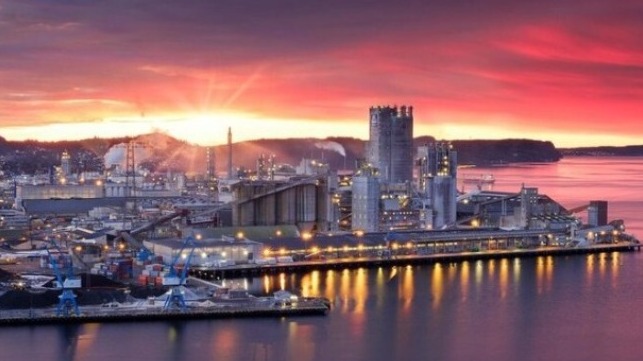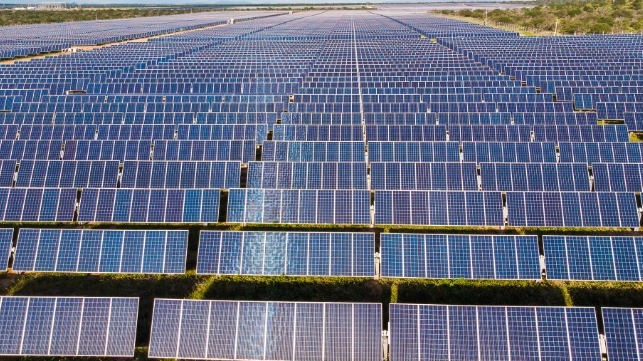Plan to Decarbonize Norway’s Ammonia Production to Build Leadership

To enable large-scale green ammonia production, a new Norwegian company is launching to decarbonize an existing production plant as part of an effort to support building Norway’s position in the emerging clean energy field. HEGRA, which is co-owned by Yara, Aker Clean Hydrogen and Statkraft aims to electrify and decarbonize the ammonia plant at Heroya in southern Norway on the North Sea.
According to the companies, the timing for establishing HEGRA is important because it will be key to building a well-functioning domestic and regional market before the global demand for ammonia increases. The plant currently produces approximately 500,000 tons of ammonia. Provided that power is available at site and the required public co-funding is in place, the companies said the project to convert Heroya into green production project could be realized in five to seven years.
“HEGRA is more than a new industrial company, it is Norway’s largest climate initiative,” said Auke Lont, Chair of HEGRA’s Board. “The decarbonization project will reduce CO2-emissions by 800,000 tons annually, equivalent to 300,000 fossil-fueled cars. It marks the beginning of developing a Norwegian value chain for green ammonia and hydrogen.”
Green ammonia, produced using renewable energy, would enable the production of carbon-free fertilizer, and is a promising zero-emission fuel for the maritime sector. HEGRA will contribute to creating a new industry based on a regional hydrogen and ammonia market, while contributing to maintaining the competitiveness of the Norwegian maritime and processing industries.
The companies noted that access to emission-free fuel will be key to the future of the maritime industry. They believe that the existing global infrastructure for ammonia will facilitate Norwegian green ammonia becoming a global commodity. With renewable energy in abundance, Norway is in a good position to capture a large share of the emerging global green hydrogen and ammonia value chain.
A report published in 2020 by The Confederation of Norwegian Enterprise found that the hydrogen industry can become a significant Norwegian export industry. They estimated it could reach more than $1 billion by 2030 and $8 billion in 2050.
China Makes a Hard Turn Towards Clean Hydrogen

China is on track to become a powerhouse for the production of green hydrogen, one of the most promising alternative fuels for shipping, according to recent reports from BloombergNEF and Fitch. As the world's largest shipbuilder, largest exporter, largest port operator and third-largest shipowner, China's fuel policy choices will have a significant impact on the composition of the world fleet.
Hydrogen power is prominently included in the Chinese Communist Party's 14th Five-Year Plan. At present, most of China's hydrogen comes from coal gasification or steam reformation of methane, but green hydrogen (from renewable electricity) is a high priority as China takes aim at carbon neutrality by 2060. According to IEA data, China has 20 green hydrogen projects under development today.
As the cost of the electrolyzer units used to split water into hydrogen and oxygen comes down, the share of green hydrogen in China's economy is expected to rise. The Hydrogen Council predicts that electrolyzer prices are going to fall by 70-80 percent within ten years' time, dramatically lowering total cost of production.
The prospect of a hydrogen value chain is attracting large Chinese companies, including solar manufacturer GCL, which is jettisoning its solar power station assets and investing in new hydrogen projects. It plans to build out about 400,000 tonnes of green hydrogen capacity in China, predominantly from solar power sources, and it is investing in a much larger conventional natural gas-to-hydrogen project in Ethiopia. "We are re-locating ourselves and focusing on a new racing track," GCL Chairman Zhu Gongshan told Reuters.
However, there may be a timeframe mismatch between when Chinese production of electrolyzers ramps up and when demand for electrolyzers materializes. BloombergNEF expects that next year, demand for electrolyzers will be in the range of 2 GW - an unprecedented number driven up by growth in China. The same year, electrolyzer manufacturing capacity will hit 10 GW, rising to 16 GW by 2024 - creating an oversupply that could drive down electrolyzer prices and prompt further uptake.
“What's happening in China right now is revolutionary for clean hydrogen,” said Martin Tengler, lead hydrogen analyst at BNEF. "Chinese companies are racing to show their compliance with the country's carbon neutrality target, pushing the market for electrolyzers . . . to be at least nine times bigger in 2022 than in 2020."
No comments:
Post a Comment